Ball Diamond Cutting Machine
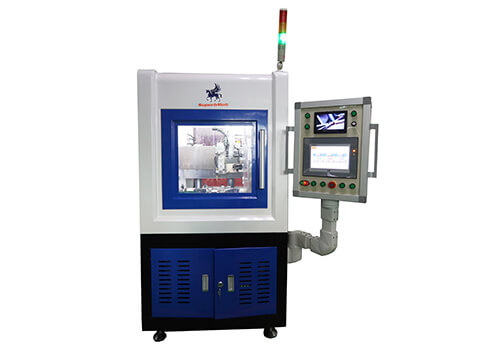
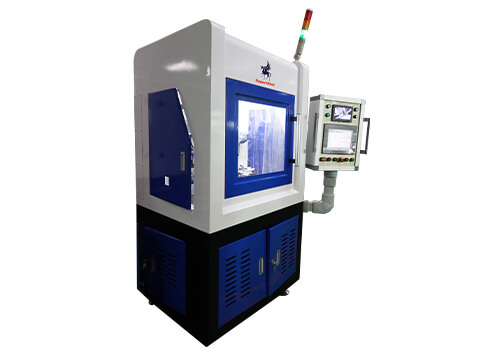
Superbmelt ball diamond cutting machine is designed for cutting precious metals hollow balls get diamond shiny effect. The diamond cutting machine uses diamond technology that cuts the metal balls automatically using a 360-degree rotation. Superbmelt diamond cutting machine is able to cut ball sizes ranging from 2mm to 18mm. Metals like gold, silver and brass can be used for making jewellery balls by the ball cutting machine.
Superbmelt hollow ball diamond cutting machine is designed to also make shiny lines to the beads after cutting. Different designs can be added to the jewellery balls by replacing the 8 axes of a cylindrical diamond knife-feed rate. Designs can also be selected using programmable software. The power required for cutting is about 200V and it has a cutting speed of 500mm/min. The jewellery faceting machine can cut shapes like squares, triangles and round shapes. Superbmelt diamond ball cutting machine is equipped with an automated numerical control that carries out decorations, faceting, punctuations, etc. It also has electrical devices, an LCD and keyboard, an automatic bead unit, etc. Spare parts are also available.
Superbmelt ball diamond cutting machine is applicable for use in the jewellery industry. Contact us at Superbmelt for enquiries and purchase the best ball diamond faceting machine.
- Superbmelt ball diamond making machine is used for making jewellery beads through a fully automated process.
- Superbmelt bead diamond cutting machine has 8 different axes that allow you to create different designs of balls.
- The automatic diamond cutting machine also has multiple patents that allow you to create facets on the surface of spherical objects and holes.
- Superbmelt ball faceting machine performs automated operations and it is equipped with other parts that make ball making easy which include electric and electronic parts, LCD + keyboard, automatic bead loading unit, protection cover, spare belts and so on.
- With a Superbmelt diamond cutting machine, you can also cut diamonds apart from ball making. This is made possible with the robotic features and the 3D laser scanner.
- Supermelt ball diamond cutting machine performs 2D calibration of objects on 2D irregularly shaped objects and 3D objects with complex and irregular shapes.
- Irregularly shaped objects such as balls, beads and opal; and 3D objects with complex and irregular shapes such as conical, spiral and parallel pipes can also be created with the automatic ball diamond making machine.
- The ball diamond cutting machine has over 10,000 designs that you can select from its software. This allows you to create as many designs as possible to meet your ball production needs.
- Superbmelt ball faceting machine is equipped with an LCD control unit that makes it easy to set parameters for an automated ball making process. This allows you to control the process from start to finish.
- The precision and speed of cutting are high. This means that all the balls are cut accurately with no errors.
- Balls produced with Superbmelt automated ball cutting machines have a smooth and shiny appearance.
- The process of jewellery ball production is highly automated which means that little to zero manual labour is needed. Feeding is done automatically with no mistakes that are bound to happen in manual processes.
| Model number: | SPB-BC80 |
| Voltage: | 220 V |
| Total power: | 4 kw |
| Spindle speed: | 7500r/min |
| Processing specifications: | Ø3.0- Ø10.0mm (round beads/olive) |
| Work efficiency: | 1-2 knives/S |
| Appearance size: | 800(L)×1450(W)×1800(H) mm |
| Machine weight: | 720 kg |
| Operation mode: | Touch screen |

2 years warranty
The warranty for our machine is one year longer than the warranty provided by other factories.

Strong service team
We will give response within 24 hours against your problem by our professional engineer.
Why SuperbMelt Ball Diamond Cutting Machine



Any Question About SuperbMelt Ball Diamond Cutting Machine
Ball Diamond Cutting Machine Guide
Introduction of Ball Diamond Cutting
Ball diamond cutting is a specialized jewelry-making process that transforms simple metal balls into dazzling decorative pieces with intricate sparkle. Traditionally, jewelers relied on manual engraving and polishing to add texture and shine to gold, silver, or brass balls used in necklaces, bracelets, and other ornaments. While these hand-crafted methods carried artistic value, they were time-consuming and inconsistent, often leading to uneven patterns and limited design possibilities.
The introduction of ball diamond cutting machines marked a turning point in jewelry manufacturing. By combining precision engineering with diamond-tipped cutting tools, these machines enabled jewelers to achieve uniform brilliance, intricate patterns, and a polished finish that hand techniques could rarely match. The technology not only improved efficiency but also unlocked new levels of creativity, allowing designers to experiment with unique textures and patterns across different materials.
Today, ball diamond cutting is more than just a decorative process—it is a core part of modern jewelry design. Its ability to enhance the sparkle, depth, and visual appeal of even the simplest jewelry ball has made it indispensable for workshops and factories alike. As consumer demand for detailed and high-quality jewelry continues to rise, the role of ball diamond cutting machines in delivering precision and artistry has never been more important.
1.1, Early Methods of Jewelry Ball Cutting
Before the arrival of automated ball diamond cutting machines, jewelers relied heavily on traditional craftsmanship to decorate and shape metal balls. These early methods involved simple hand tools such as gravers, chisels, and small rotary files. Skilled artisans would painstakingly carve or etch patterns onto the surface of gold, silver, or brass beads, often guided only by experience and a steady hand.
While these techniques produced beautiful and unique results, they had significant limitations. Each ball was cut individually, making the process slow and labor-intensive. Consistency was difficult to achieve, especially when producing large quantities of jewelry beads. Designs were also limited to relatively simple lines or shallow engravings, as deeper cuts increased the risk of damaging or deforming the metal ball.
Despite these challenges, hand-cutting played an important role in the history of jewelry making. It laid the foundation for decorative beadwork and established the demand for ornamented balls in necklaces, bracelets, and other jewelry pieces. These early efforts highlighted the artistry of jewelers, but they also revealed the need for a faster, more precise, and more versatile solution—eventually leading to the development of modern ball diamond cutting machines.
1.2, Modern Ball Diamond Cutting Technology
The introduction of modern ball diamond cutting machines has completely transformed the jewelry industry. Instead of relying on manual skill and repetitive handwork, today’s machines use advanced automation, numerical control systems, and diamond-tipped cutting tools to achieve precise and consistent results.
Modern diamond cutting machines employ 360-degree rotational cutting that allows uniform faceting on spherical objects such as beads and hollow balls. Equipped with multiple axes—often up to eight—the machines can create intricate geometric patterns, including lines, facets, and even complex decorative shapes. This ensures that each ball has a flawless finish with a brilliant diamond-like shine.
Another key advancement is the integration of programmable software. Jewelers can now select from thousands of pre-designed patterns or even upload custom designs, giving unparalleled flexibility in jewelry production. With automated feeding systems, LCD control panels, and robotic calibration, the entire process—from loading the bead to finishing the cut—can be completed with minimal human intervention.
Unlike traditional methods, modern technology delivers speed, accuracy, and repeatability. Cutting speeds can reach several hundred millimeters per minute, and every bead produced is nearly identical in quality. Furthermore, machines are capable of handling various precious and semi-precious metals, including gold, silver, brass, and even irregularly shaped materials.
Ultimately, modern ball diamond cutting technology not only enhances productivity but also expands the creative possibilities for jewelers. It bridges the gap between traditional artistry and industrial-scale precision, making it possible to mass-produce jewelry beads that retain the charm of handcrafted designs while meeting modern standards of efficiency and quality.
1.3, History of Decorative Ball Jewelry
Decorative ball jewelry has a long and fascinating history, tracing back thousands of years when artisans first experimented with shaping metal into spherical ornaments. In ancient civilizations such as Egypt, Mesopotamia, and Greece, small metal beads and balls were crafted by hand and strung together as necklaces, bracelets, and ceremonial adornments. These early beads were valued not only for their beauty but also for their symbolic meanings, often representing eternity, unity, and protection.
During the Renaissance and Baroque periods, decorative ball jewelry became more refined. Jewelers began adding intricate engravings, gemstone inlays, and polished finishes to enhance their brilliance. Hollow metal spheres gained popularity in Europe, both as standalone pendants and as elements in elaborate jewelry sets. These designs reflected wealth and status, making spherical jewelry a hallmark of nobility.
In the 19th and early 20th centuries, with the advent of industrial techniques, decorative ball jewelry shifted from exclusive craftsmanship to wider accessibility. The use of machinery allowed jewelers to produce uniform metal balls more efficiently, enabling the middle class to enjoy jewelry once reserved for elites. At the same time, different cultures incorporated bead and ball jewelry into their traditional attire, blending artistry with heritage.
Today, decorative ball jewelry continues to thrive, evolving through the use of ball diamond cutting machines. Modern technology allows artisans to create thousands of intricate designs on gold, silver, brass, and even irregularly shaped beads with unmatched precision. From minimalist patterns to highly detailed faceted surfaces, decorative ball jewelry has become a bridge between ancient symbolism and contemporary fashion.
1.4, Why Diamond Cutting Outperforms Traditional Techniques
Traditional jewelry ball cutting methods relied heavily on manual tools, hand engraving, or simple rotary cutters. While these approaches allowed for creative expression, they came with significant limitations: inconsistent precision, slower production speeds, and restricted design possibilities. Achieving uniform patterns across hundreds of beads was nearly impossible without noticeable variations.
Diamond cutting technology revolutionized this process. Using high-precision tools combined with CNC automation, diamond cutters deliver micron-level accuracy, ensuring every ball maintains consistent symmetry, depth, and brilliance. The sharpness of diamond tips produces a reflective, mirror-like surface that traditional steel tools simply cannot achieve.
Another advantage lies in efficiency. Where manual methods could take hours for a small batch, diamond cutting machines can produce large volumes of decorative beads within minutes—without compromising quality. This is especially critical for jewelry manufacturers who need both speed and flawless results.
In addition, diamond cutting unlocks design flexibility. From geometric shapes like squares and triangles to intricate faceted surfaces and even 3D irregular patterns, the technology allows jewelers to expand beyond what hand tools ever made possible. This versatility meets the demands of modern consumers seeking unique and fashionable jewelry.
Ultimately, diamond cutting outperforms traditional techniques by combining precision, durability, speed, and creativity—elevating jewelry balls from simple decorative elements to high-value, luxury products.
Types of Ball Diamond Cutting Machines on the Market
2.1, Automatic Hollow Ball Diamond Cutting Machines
Automatic hollow ball diamond cutting machines represent the modern standard for precision jewelry ball production. Unlike traditional hand-cut methods, these machines combine computer-controlled automation with diamond-tipped tools, allowing for highly detailed faceting on metal balls made of gold, silver, brass, and other jewelry alloys.
These machines work by rotating the hollow ball in multiple axes while the diamond cutting head carves precise facets or patterns across the surface. Advanced models, like those from SuperbMelt, support 360-degree rotation and programmable designs, enabling the creation of thousands of unique patterns. The automation ensures that each bead maintains uniform size, shape, and reflective brilliance, essential for high-end jewelry production.
Key advantages of automatic hollow ball diamond cutting machines include:
High Efficiency: Capable of processing multiple balls simultaneously, significantly reducing production time.
Consistent Precision: Every hollow ball exhibits identical faceting and pattern depth, eliminating human error.
Versatile Design Options: Supports geometric shapes, custom faceting, engraved lines, and even 3D irregular patterns.
Material Compatibility: Suitable for precious metals like gold, silver, platinum, and brass.
By automating the cutting process, jewelers can meet large-scale production demands while maintaining the quality and intricacy that handcrafted methods struggle to achieve. These machines are ideal for manufacturers focused on producing high-quality decorative beads, luxury jewelry, and precision components with minimal manual labor.
2.2, Solid Ball Diamond Cutting Machines
Solid ball diamond cutting machines are designed for precise faceting and decorative engraving on solid metal spheres. Unlike hollow ball cutters, these machines handle dense, solid balls, enabling jewelers to produce robust beads or decorative spheres that require greater structural integrity.
These machines utilize diamond-tipped cutting heads combined with multi-axis rotation systems to achieve intricate designs, including geometric facets, engraved lines, and customized patterns. Operators can program multiple designs into the machine, allowing for repeatable and high-precision production of decorative balls.
Key features of solid ball diamond cutting machines include:
High-Precision Cutting: Each solid ball is engraved with consistent depth and symmetry, ideal for luxury jewelry components.
Versatile Patterning: Capable of creating diverse faceting styles, from simple geometric shapes to complex multi-dimensional designs.
Automated Operation: Reduces manual labor and increases production efficiency while maintaining accuracy.
Material Compatibility: Works with metals such as gold, silver, brass, and other jewelry alloys.
Programmable Design Storage: Software integration allows jewelers to store, modify, and replicate designs quickly for batch production.
By using solid ball diamond cutting machines, jewelry manufacturers can produce high-quality decorative balls at scale, offering both aesthetic appeal and structural durability. These machines are particularly suited for premium jewelry lines, custom bead designs, and luxury ornaments where precision and consistency are critical.
2.3, CNC Integrated Ball Cutting Machines
CNC integrated ball cutting machines represent the pinnacle of automation and precision in decorative ball production. These machines combine computer numerical control (CNC) technology with multi-axis diamond cutting, allowing jewelers to produce intricate designs on both hollow and solid balls with minimal manual intervention.
The integrated system typically includes:
Automated Ball Feeding: Ensures consistent positioning of each ball for precise cutting.
Multi-Axis Rotation: Enables 360-degree faceting and engraving, accommodating complex patterns and irregular shapes.
Programmable Design Software: Operators can import custom designs or select from preloaded patterns, ensuring repeatable and accurate results across production batches.
LCD and Touchscreen Controls: Simplifies operation and allows for real-time monitoring and adjustments.
Versatile Material Handling: Capable of processing gold, silver, brass, and other jewelry metals, as well as some composite materials.
CNC integrated machines offer several advantages over traditional methods and basic automated cutters:
High Efficiency: Significantly reduces production time by performing cutting, faceting, and engraving in a single run.
Precision and Consistency: Every ball produced meets exacting standards, eliminating irregularities common in manual or semi-automatic processes.
Customizability: Supports the creation of unique patterns, shapes, and surface textures, making it ideal for luxury jewelry production.
Reduced Labor Costs: Automation minimizes human intervention, lowering the risk of error and improving overall operational efficiency.
By leveraging CNC integrated ball cutting machines, jewelry manufacturers can achieve high-volume, high-precision production while maintaining artistic flexibility and product quality. This makes them particularly suitable for high-end jewelry collections, bespoke designs, and large-scale manufacturing.
Why Ball Diamond Cutting Machines are Needed
3.1, The Rise of Modern Jewelry Design
The evolution of jewelry design has been closely tied to advances in precision manufacturing. In the past, creating intricate decorative balls required extensive manual labor, relying on the skill and patience of artisans. While traditional methods produced beautiful results, they were time-consuming, inconsistent, and limited in terms of complex patterns.
With the growing demand for customized, high-end jewelry, modern designers sought ways to combine artistry with efficiency. The rise of automated ball diamond cutting equipment addressed this need by enabling:
Complex Patterns: Designs such as faceted spheres, geometric shapes, and engraved textures could now be produced with exact precision.
Consistency Across Batches: High-volume production became feasible without compromising quality, allowing jewelers to meet market demands for uniformity.
Creative Freedom: Designers gained the ability to experiment with intricate surfaces, shapes, and finishes that were previously impractical or impossible with manual methods.
This shift not only transformed the production process but also redefined the aesthetic possibilities in jewelry design. Modern ball diamond cutting machines became a cornerstone in crafting jewelry that balances artistic expression, precision, and efficiency, supporting both boutique artisans and large-scale manufacturers.
3.2, Market Value of Precision-Cut Jewelry Balls
Precision-cut jewelry balls have become highly sought after in the modern jewelry market due to their aesthetic appeal, uniformity, and enhanced sparkle. Unlike manually cut or rough-surfaced beads, precision-cut balls reflect light consistently across every facet, which enhances their visual brilliance and overall perceived value.
Several factors contribute to the growing market value of these precision-cut spheres:
Enhanced Design Appeal: The ability to create intricate patterns, faceted surfaces, and uniform textures allows designers to craft distinctive pieces that attract premium buyers.
Consistency for Mass Production: Automated cutting ensures that every bead or ball meets exact specifications, which is crucial for matching jewelry sets, high-end necklaces, bracelets, or earrings.
Reduced Material Waste: Modern machines optimize cutting paths and rotation, minimizing the loss of precious metals such as gold, silver, or brass, making production more cost-effective while maintaining high-quality results.
Customization for Luxury Markets: Personalized designs, such as engraved patterns or unique faceting styles, appeal to consumers willing to pay higher prices for bespoke or limited-edition pieces.
As a result, jewelry incorporating precision-cut balls commands higher prices and strengthens a brand’s position in the competitive luxury market. This market trend underscores why investing in advanced ball diamond cutting machines is essential for jewelers aiming to maximize both quality and profitability.
3.3, Limitations of Manual Crafting
While traditional handcrafting techniques have been valued for centuries, creating jewelry balls manually comes with significant limitations that affect both efficiency and product quality.
Inconsistent Precision: Manually cut or shaped balls often vary in size, surface smoothness, and facet alignment. This inconsistency reduces visual appeal and can make it difficult to assemble uniform jewelry pieces.
Time-Intensive Process: Hand-cutting and polishing spheres is extremely labor-intensive. Skilled artisans may require hours or even days to produce a single high-quality ball, limiting production capacity.
Higher Material Waste: Manual crafting tends to produce more scrap metal due to imperfect cuts and errors, increasing production costs—especially when working with precious metals like gold, silver, or platinum.
Limited Design Complexity: Creating intricate patterns or precise facets by hand is challenging, restricting the range of design possibilities and the ability to meet modern aesthetic demands.
Scalability Issues: For jewelry businesses aiming for large-scale production, relying solely on manual labor is impractical. Meeting growing market demand while maintaining consistent quality becomes nearly impossible.
These limitations highlight the necessity of automated ball diamond cutting machines, which ensure uniformity, precision, and efficiency—while also expanding creative possibilities in modern jewelry design.
3.4, Role of Diamond Cutting in Brand Differentiation
In today’s competitive jewelry market, precision-cut jewelry balls serve as a key differentiator for brands seeking to stand out. The use of diamond cutting technology not only enhances the aesthetic appeal of products but also reinforces a brand’s commitment to quality and innovation.
Enhanced Visual Impact: Faceted balls produced with diamond cutting reflect light in a uniform and dazzling manner. This sparkle and brilliance immediately capture consumer attention and convey a sense of luxury.
Consistent Quality: Automated diamond cutting ensures that each jewelry ball meets strict standards for size, symmetry, and surface finish. Brands can confidently offer products that maintain high quality across large production runs, strengthening consumer trust.
Design Versatility: Diamond cutting machines allow brands to create intricate patterns, geometric facets, or custom designs that are difficult—or impossible—to achieve manually. This capability enables unique product lines and limited-edition collections.
Market Positioning: High-precision cutting signals technical expertise and craftsmanship, positioning a brand as premium or technologically advanced. Consumers increasingly associate precise, flawless finishing with value and reliability.
Efficiency and Scalability: Beyond aesthetics, diamond cutting technology allows for faster production of uniform, high-quality balls. Brands can scale production without compromising on quality, meeting both retail and wholesale demands efficiently.
By leveraging diamond cutting technology, jewelry brands can differentiate themselves, attract discerning customers, and maintain a competitive edge in both local and international markets.
How Ball Diamond Cutting Machines Work
4.1, Diamond Tool Technology
At the core of every ball diamond cutting machine lies the diamond cutting tool, which is essential for achieving precise facets and high-quality finishes on jewelry balls. Diamonds are the hardest naturally occurring material, allowing the tool to cut through precious metals like gold, silver, brass, and even platinum without deforming or damaging the ball’s surface.
Key aspects of diamond tool technology include:
Extreme Hardness and Durability: The diamond tips withstand continuous cutting and high-speed rotation, maintaining sharpness over long production cycles. This ensures consistent facet precision and minimal wear.
Versatile Cutting Angles: Modern tools can be configured along multiple axes, enabling complex geometries, decorative grooves, and intricate patterns on both hollow and solid balls.
High-Speed Operation: Diamond tools allow fast cutting speeds without compromising surface smoothness. This is crucial for high-volume jewelry production where efficiency and quality must go hand in hand.
Adjustable Feed Rate: Operators can fine-tune the feed rate and depth of cut depending on the material hardness and desired pattern, achieving customized finishes and intricate details.
Automated Calibration: Advanced machines use CNC or software-guided calibration to ensure the diamond tool maintains exact positioning relative to each ball, producing uniform facets and consistent brilliance.
By integrating precision diamond tools with modern automation, jewelers can achieve highly polished, visually stunning balls suitable for rings, bracelets, necklaces, and other decorative jewelry components.
4.2, 360° Automatic Rotation
A key feature of modern ball diamond cutting machines is the 360° automatic rotation mechanism, which allows jewelry balls to be precisely cut on all sides without manual repositioning. This innovation is vital for achieving uniform facets, smooth finishes, and high-quality reflective surfaces.
How it works:
Motorized Rotation: The machine uses a motorized spindle or rotating unit to spin the ball in a controlled, continuous motion along multiple axes.
Synchronized Cutting: As the ball rotates, the diamond tool moves according to programmed patterns, ensuring each facet is cut at the correct angle.
Uniformity: Automatic rotation eliminates inconsistencies that often occur with manual handling, producing identical balls with flawless symmetry.
Speed & Efficiency: The 360° rotation combined with high-speed cutting drastically reduces production time, enabling large-scale manufacturing without sacrificing quality.
Benefits:
Perfectly symmetrical jewelry balls suitable for high-end rings, bracelets, and necklaces.
Ability to create complex designs such as spirals, grooves, or multiple decorative facets.
Reduction in human error, ensuring consistent brilliance and polish across each batch.
Optimized workflow for high-volume production, enhancing efficiency and reducing labor costs.
By integrating 360° automatic rotation, jewelers and manufacturers can achieve a level of precision and repeatability that manual methods cannot match, making it a cornerstone feature of modern ball diamond cutting technology.
4.3, Engraving & Polishing in One
Modern ball diamond cutting machines integrate engraving and polishing capabilities directly into the production process, allowing jewelry balls to achieve a finished, showroom-quality appearance immediately after cutting. This dual-function approach streamlines manufacturing and ensures consistent quality.
How it works:
Precision Engraving: Using multi-axis diamond tools, the machine can carve intricate patterns, facets, or textures onto the surface of the ball with micrometer accuracy.
Integrated Polishing: After cutting, the system automatically applies fine polishing to each facet, smoothing rough edges and enhancing the metal’s reflective properties.
Automation: Both engraving and polishing are controlled via software, which coordinates tool movements and rotational speed for uniform results across batches.
Benefits:
Time Efficiency: Combines two production steps into one, reducing manual labor and production time.
Consistent Quality: Automated polishing ensures every ball has the same shine and finish, eliminating variability from manual polishing.
Enhanced Design Capability: Allows creation of complex surface textures and patterns without additional finishing steps.
Reduced Material Waste: Integrated polishing minimizes the need for reworking defective pieces, saving precious metals.
By uniting engraving and polishing in a single automated process, manufacturers can produce high-precision, aesthetically perfect jewelry balls at scale, meeting the demands of luxury and custom jewelry markets.
4.4, Customization with CNC Programming
CNC (Computer Numerical Control) programming allows ball diamond cutting machines to deliver fully customized jewelry designs with exceptional precision. By translating digital designs into exact tool paths, manufacturers can produce unique patterns, facets, and textures tailored to client specifications.
How it works:
Digital Design Integration: CAD files or pre-designed patterns are uploaded into the machine’s software, dictating the rotation, cutting depth, and engraving sequence.
Multi-Axis Precision: CNC control guides the diamond tools along multiple axes, enabling complex geometries, including conical, spiral, and irregular shapes.
Automated Repeatability: Once programmed, the machine can reproduce the same design consistently across hundreds or thousands of units, ensuring uniformity for batch production.
Benefits:
Unlimited Design Possibilities: Jewelry makers can create bespoke designs that would be impossible or highly labor-intensive to achieve manually.
High Precision: CNC programming ensures every cut and facet aligns perfectly, enhancing the quality and symmetry of the jewelry balls.
Scalable Production: Custom designs can be reproduced reliably for small artisan batches or large-scale manufacturing.
Efficiency: Reduces manual adjustments and errors, saving time and lowering production costs.
With CNC programming, ball diamond cutting machines enable full creative freedom while maintaining high efficiency and precision, making them an essential tool for modern jewelry production.
Applications in Jewelry Manufacturing
5.1, Gold Ball Cutting
Gold balls are a staple in jewelry design, ranging from beads in necklaces and bracelets to decorative accents in rings and earrings. Using a ball diamond cutting machine, manufacturers can achieve highly precise facets and reflective surfaces that enhance the luster and visual appeal of gold components.
Key Advantages of Using Diamond Cutting for Gold Balls:
Precision: The machine ensures uniform cutting across all gold balls, maintaining consistency in size, shape, and surface pattern.
Efficiency: Automatic 360° rotation and CNC programming allow for high-speed production, reducing the time compared to manual methods.
Customization: Designers can create complex surface patterns, including faceted, engraved, or patterned designs, to suit different jewelry styles.
Surface Quality: Diamond cutting produces a smooth, polished finish, eliminating the need for extensive post-processing.
Material Preservation: Controlled cutting minimizes material loss, preserving the value of precious gold.
By applying diamond cutting technology, manufacturers can produce gold balls that meet modern aesthetic standards, improve production efficiency, and offer a diverse range of designs for high-end jewelry markets.
5.2, Silver and Brass Jewelry Balls
Silver and brass balls are widely used in affordable and mid-range jewelry, providing a versatile base for beads, charms, and decorative accents. Using a ball diamond cutting machine, these metals can be transformed into highly detailed and polished components that mimic the quality and brilliance of precious metals.
Key Benefits of Diamond Cutting for Silver and Brass Balls:
Enhanced Precision: Automated cutting ensures uniform size and intricate surface patterns, even for small or irregularly shaped balls.
Time Efficiency: The CNC-controlled 360° rotation and automated feeding system allow for fast, repeatable production, minimizing manual labor.
Design Flexibility: Customizable programming enables the creation of varied faceted designs, grooves, and surface textures, expanding creative possibilities.
High-Quality Finish: Diamond cutting produces smooth, shiny surfaces, reducing the need for additional polishing.
Material Optimization: Efficient cutting reduces waste, preserving valuable silver and brass materials.
By leveraging diamond cutting technology, manufacturers can produce silver and brass jewelry balls that rival high-end designs, while maintaining cost-effectiveness and consistent quality across large production batches.
5.3, Platinum and High-End Jewelry Designs
Platinum jewelry balls are a staple in luxury and high-end jewelry, prized for their durability, rarity, and brilliant finish. Using a ball diamond cutting machine, platinum components can be precisely faceted and engraved, creating exquisite designs that meet the exacting standards of luxury markets.
Key Advantages for Platinum and Premium Jewelry:
Extreme Precision: CNC-controlled diamond cutting ensures perfectly uniform facets and intricate patterns, essential for high-value jewelry pieces.
Minimal Material Loss: Platinum is costly; automated cutting minimizes waste while maintaining high-quality surfaces.
Complex Design Capabilities: The machine supports custom 3D patterns, fine engravings, and unique surface textures, enabling designers to push creative boundaries.
Enhanced Finish: Diamond cutting delivers mirror-like surfaces that maximize the natural luster and appeal of platinum.
Consistency Across Batches: Even large production runs maintain uniform quality, crucial for brand reputation in the luxury segment.
By integrating diamond cutting technology into platinum jewelry production, manufacturers can achieve high-precision, visually striking products, reinforcing brand prestige and meeting the expectations of discerning customers.
5.3, Beyond Jewelry: Decorative Applications
While Ball Diamond Cutting Machines are primarily designed for jewelry, their precision cutting and engraving capabilities make them valuable for decorative applications across multiple industries. The same technology used for faceting gold, silver, and platinum balls can be applied to create high-quality decorative spheres, beads, and ornamental components for luxury goods, fashion accessories, and specialty crafts.
Key Decorative Applications:
Luxury Accessories: Enhancing watches, cufflinks, and other high-end personal items with precision-cut spheres and textured surfaces.
Interior Decoration: Producing small ornamental balls or faceted metal pieces for artistic designs, sculptures, or décor accents.
Collectibles and Awards: Creating finely detailed metallic collectible items and decorative awards that require consistent faceting and high-luster finishes.
Fashion and Costume Design: Integrating faceted metal balls into clothing embellishments, handbag accessories, or other fashion-forward products.
By extending the use of diamond cutting technology beyond jewelry, manufacturers and designers can maximize creativity, achieve consistent high-quality results, and open new markets for precision-finished decorative items.
Conclusion
The Superbmelt Ball Diamond Cutting Machine represents a transformative advancement in jewelry manufacturing and precision decorative applications. From its early roots in manual ball cutting to today’s fully automated CNC technology, diamond faceting has drastically improved accuracy, efficiency, and design possibilities.
Equipped with 8-axis cutting, 360° automatic rotation, and programmable software, these machines enable manufacturers to produce consistent, high-quality gold, silver, brass, and platinum balls with intricate faceting and polished finishes. Automation reduces manual labor, minimizes errors, and accelerates production, making it ideal for small studios, large jewelry factories, and high-end designers.
Beyond traditional jewelry, the versatility of ball diamond cutting technology extends to luxury accessories, decorative arts, collectible items, and fashion products, allowing creators to explore new markets and elevate product aesthetics. By combining precision, repeatability, and customization, Ball Diamond Cutting Machines not only enhance production efficiency but also support brand differentiation in competitive industries.
In essence, investing in a Superbmelt Ball Diamond Cutting Machine empowers manufacturers to achieve superior craftsmanship, faster turnaround, and limitless creative potential, solidifying its role as an essential tool for modern jewelry and decorative metal production.

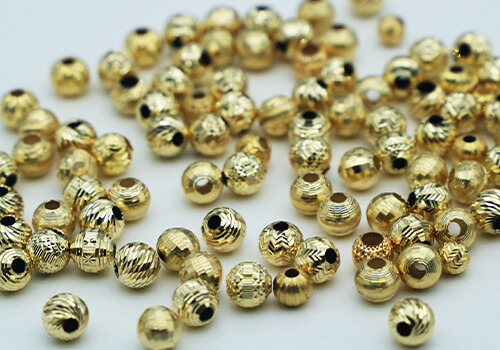
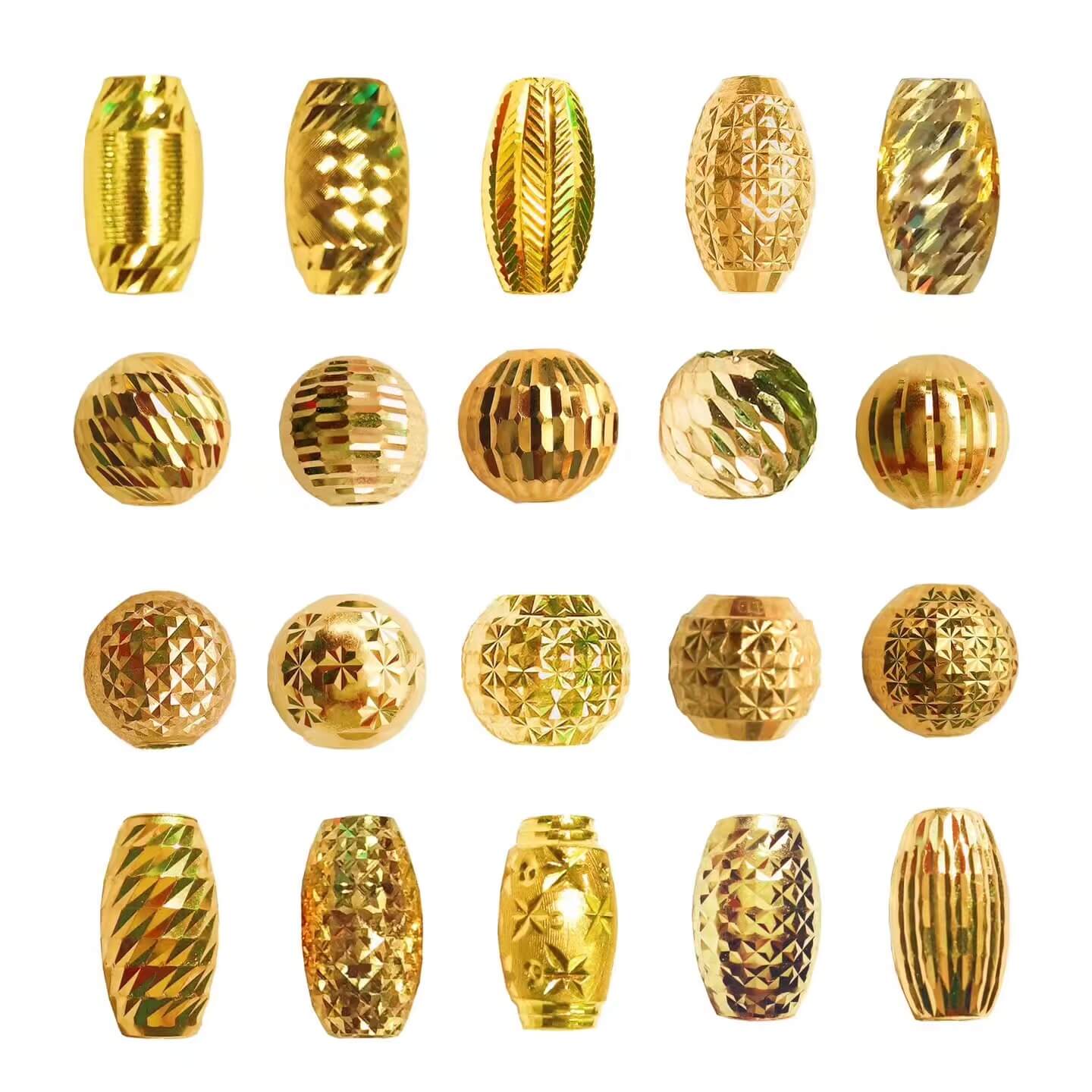
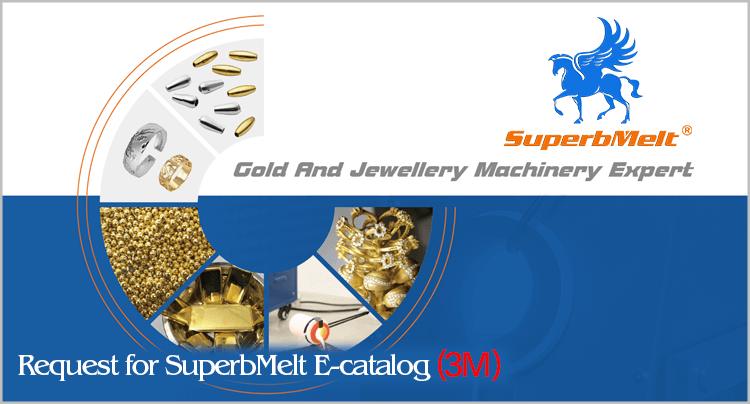
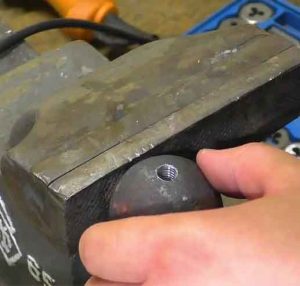
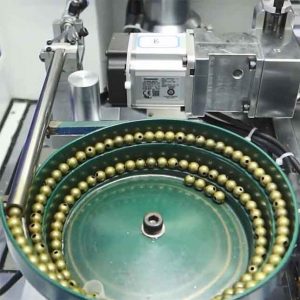
 © Copyright 2008-2021 Superb Electromachinery Co., Limited
© Copyright 2008-2021 Superb Electromachinery Co., Limited